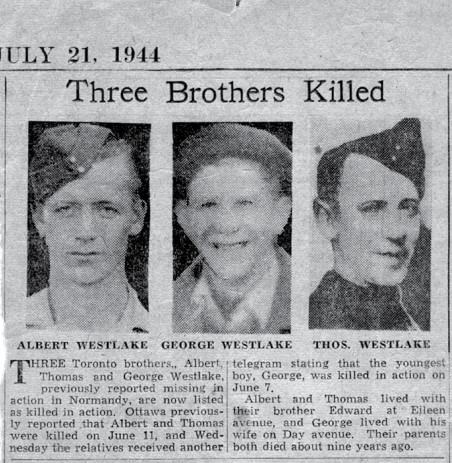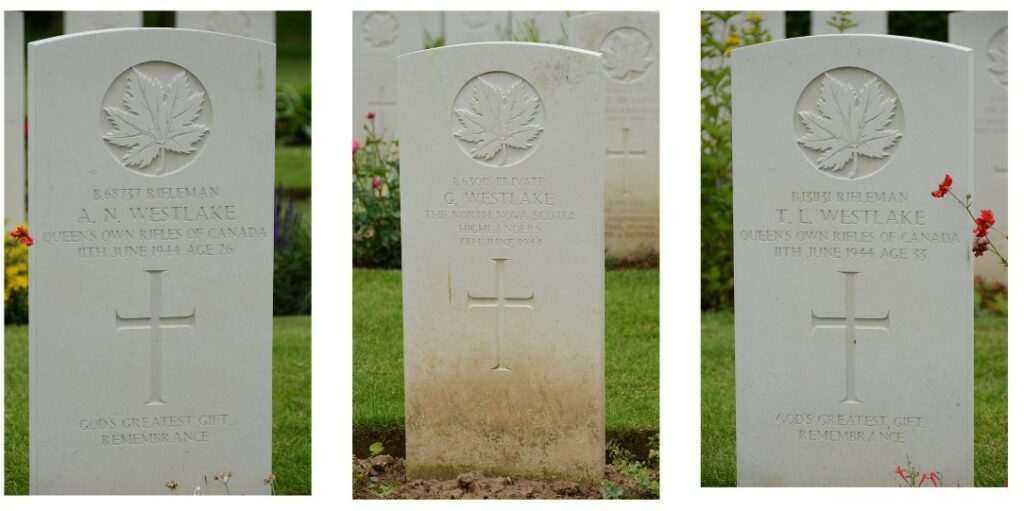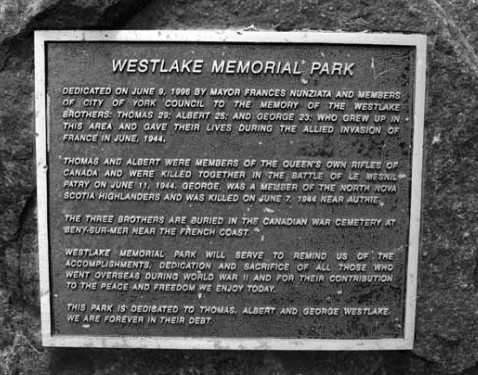The Westlake Brothers

20 February 2023
If you visit the D-Day landing beaches of Normandy, you might go to Beny-sur-Mer. It’s a small village behind the coast, not too far from Juno Beach, the sector where the Canadian soldiers of the 3rd Canadian Infantry Division had to land. One of the main objectives was to reach the airport of Carpiquet, (northwest of the large city of Caen). On their way, the Canadians fought German divisions and among them, one of the nastiest, the 12 SS Panzer Division led by Kurt Meyer. They are specially known for their brutality and fanatism, many Canadian soldiers who had been made prisoners have been executed by these young German soldiers.
The village of Beny-sur-Mer is special because there is a Canadian military cemetery where there are 2048 burials from WW2. The site is maintained by the CWGC (Commonwealth War Graves Commission). The soldiers buried here died fighting during the first weeks of the Normandy battle. Among them, three brothers from Toronto who gave their lives to free France and Europe.
Private George Westlake who fought with the North Nova Scotia Highlanders died June 7th 1944 during the battle for Authie, he was 23. Its brigade was in position in that village but in a precarious position. Due to the haste of the advance, their left flank was unprotected. The Germans counterattacked on that open flank, surrounded and overwhelmed the Canadians with the tanks and troops of the 12th SS (Hitler Youth) Panzer Division. George Westlake died in an orchard after he fought his first battle. For this fight, the number of casualties is very high: 84 killed, 158 wounded, and 128 lost as prisoners of war.
His two brothers, Thomas and Albert, died June 11th 1944, in the town of Mesnil-Patry serving in the Queen’s own Rifles Regiment, the dead bodies were found in each other’s arms. The attack on the village was made without previous reconnaissance or artillery preparation even if there were numerous enemies. The Canadians tanks attacked through open fields but were easy targets and they suffered a lot of casualties for that reason. An eyewitness said that “Tommy and Ab” were sharing a gun and fought together until the end after “doing a damn good job”. The regiment suffered 96 casualties that day, 55 of them fatal.
Today, their stories are well-known thanks to the work of their nephew, Gary Westlake whose mission was to work for Memory. A park in the city of Toronto is named after them and their sacrifice will be remembered. An association named “The Westlake Brother’s Souvenir” was created in 2006 in Normandy thanks to a group of high school teachers and students and many ceremonies were organized by them to thanks our liberators.





